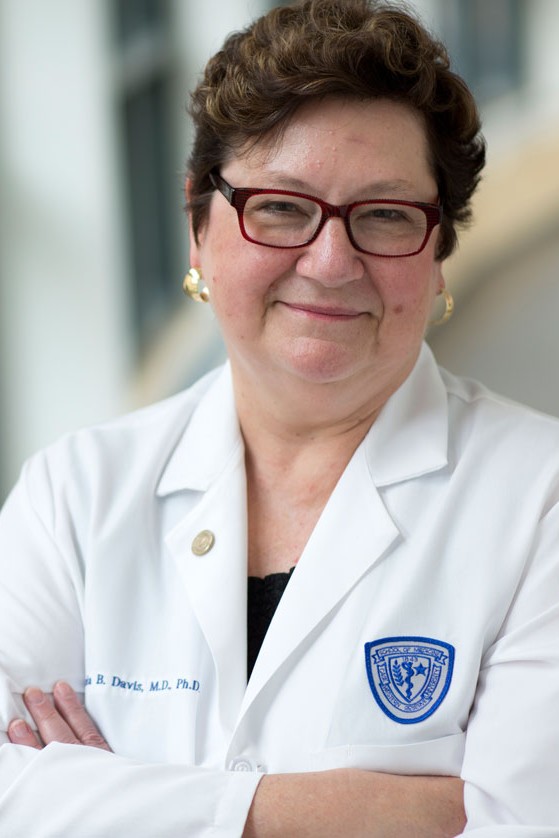School of Medicine dean is chair of medicine section
When the American Association for the Advancement of Science kicked off its four-day annual meeting last Thursday, two members of the Case Western Reserve community attended in new roles.


Alumnus and trustee Geoffrey M. Duyk, MD, PhD, recently won election as an AAAS fellow in the section on biological sciences, while School of Medicine Dean Pamela B. Davis, MD, PhD, is the chair of the association’s section on medicine.
The association began an annual election of fellows in 1874, and each year its purpose is “to recognize members for their scientifically or socially distinguished efforts to advance science or its applications,” as the AAAS explains.
Since 2004, Duyk has been a partner and managing director of TPG Biotech, the life science investment arm of the global firm TPG. After spending several years focused on health care-related areas, Duyk helped launch a new investment fund within the company, TPG ART (for Alternative and Renewable Technologies). The fund focuses on emerging technologies and business models that address issues of resource efficiency and environmental impact, both in regards to public health and the ecology.
Before arriving at TPG, Duyk was president of research and development at Exelixis Inc., a company dedicated to developing small-molecule therapeutics that can improve the treatment of cancer. Before Exelixis, Duyk was among the founding scientific staff of Millennium Pharmaceuticals Inc. and its vice president of genomics. His work in the private sector followed stints as an assistant professor of genetics at Harvard Medical School as well as an assistant investigator with the Howard Hughes Medical Institute.
Given that he had been removed from direct research for a decade, Duyk found himself somewhat surprised by his election. He quipped that the vote eased his mother’s mind about his transition to finance, then offered a more serious observation.
“I hope this is an acknowledgment that scientists, engineers and physicians have multiple roles and broad responsibilities that can contribute to and support multiple sectors of the economy as well as society in general,” Duyk said. “This is especially important in an era where critical decisions based on scientific facts and analysis are necessary, but there seems to be pushback and even bias, within our highly polarized society, against such approaches.”
After graduating Phi Beta Kappa from Wesleyan University in 1980, Duyk earned his PhD in biochemistry in 1985 and his MD in 1986. He completed his medical residency and fellowship at the University of California at San Francisco. A former trustee of Wesleyan, he joined Case Western Reserve’s board a year ago.
“AAAS fellows are extremely accomplished individuals, and the focus is on impact of their work on society,” Dean Davis said. “To have Geoff honored in biological sciences indicates that the basic biologic research he has conducted and his later work in advancing discoveries to utility in the biologic and medical community has occurred at the very highest level.”
Duyk knew he had been nominated by a colleague, but did not realize he had been elected as a fellow until another colleague emailed after seeing the AAAS’ announcement in the journal Science. He believes strongly in the organization’s mission of promoting science and science education.
More than 8,000 people from 60 countries attended the 181st AAAS annual meeting, also dubbed the “world’s largest general scientific conference.” Sessions included an expert panel discussion regarding lessons scientists had learned from Ebola, dialogue about ways to engage the public in sciences, and groundbreaking techniques to visualize the brain that may illuminate the mechanisms related to fear and addiction.
For his part, Duyk was particularly impressed with a talk by Eric Betzig, a group leader at the Howard Hughes Medical Institute’s Janelia Research Campus, and one of three recipients of the 2014 Nobel Prize for Chemistry for the development of super-resolved fluorescence microscopy. His AAAS presentation focused on the possibility of capturing images of living organisms at high resolution within a four-dimensional continuum of time and space. Highlighting two existing technologies, Betzig suggested that cell biology ultimately could transition from examination of cells on slides to imaging them within their actual physiological setting.
“Eric Betzig’s talk was extraordinary,” Duyk said, adding that the remarks that impressed were not limited to the science and technology being developed. “His insightful comments on how to promote innovation within our basic research institutions deeply resonated with the audience.”
This year’s meeting also welcomed incoming Chief Executive Officer Rush D. Holt, PhD, an accomplished physicist and former New Jersey congressman. Holt sounded a theme of increased engagement and advocacy among the scientific community in science education, science and public policy. In addition, Dean Davis noted, the AAAS also wants to focus more squarely on ways to serve its own roughly 120,000 members.
“We will have an opportunity this year to contribute to changes in organization and operation that will take advantage of the extraordinary disciplinary breadth of AAAS,” Dean Davis said. The changes have the potential to “spark creativity at the interfaces between divisions, help with youngsters considering science careers, focus advocacy efforts, and participate in career-advancement programs.”
In fact, Dean Davis noted, the annual meeting’s family science day programs attracted more than 5,000 registrants. In addition, most of the symposia at the meetings involve more than one disciplinary section, and medicine already has been approached by roughly half of the other sections to partner on symposia involving global health and engagement.
“From agriculture to anthropology to chemistry to pharmaceutical sciences to dental to biological sciences, science and society, industrial science—the list goes on,” Dean Davis said. “Everyone is concerned about their health.”
